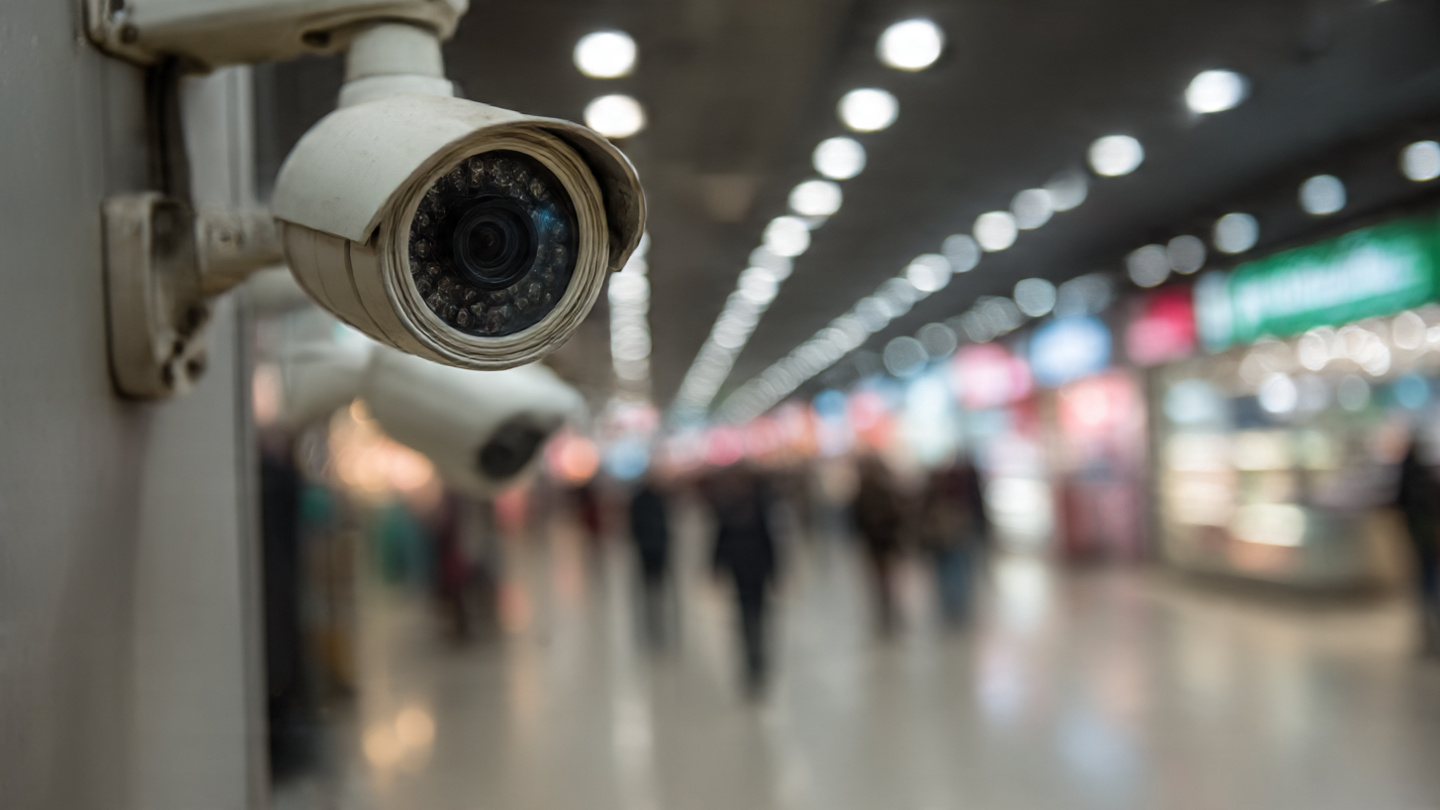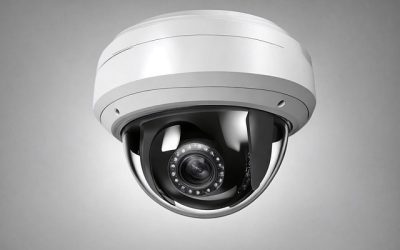CCTV Placement Guide: Maximising Coverage and Eliminating Blind Spots.
The strategic placement of Closed-Circuit Television (CCTV) cameras is crucial for effective surveillance and security. Properly positioned cameras can deter criminal activity, provide valuable evidence in the event of an incident, and enhance overall safety for both residential and commercial properties. When CCTV systems are installed with careful consideration of their placement, they can significantly reduce the likelihood of theft, vandalism, and other security breaches.
This makes understanding the nuances of CCTV placement not just beneficial but essential for anyone looking to bolster their security measures. Moreover, the effectiveness of a CCTV system is not solely dependent on the quality of the cameras themselves but also on how well they are integrated into the environment. A well-placed camera can cover a wide area, capturing critical details that might otherwise go unnoticed.
Conversely, poor placement can lead to blind spots or inadequate coverage, rendering the system ineffective. Therefore, understanding the importance of CCTV placement is the first step in creating a robust security framework that protects your property and provides peace of mind. Peace of mind is our priority.
Assessing the Area for CCTV Coverage
Before installing CCTV cameras, it is vital to conduct a thorough assessment of the area that requires surveillance. This involves identifying key locations that are vulnerable to security threats, such as entry points, parking lots, and high-traffic areas. By mapping out these critical zones, you can determine where cameras will be most effective in monitoring activity and deterring potential intruders.
Additionally, assessing the area allows you to consider factors such as lighting conditions, potential obstructions, and the layout of the property. During this assessment, it is also important to take into account the specific needs of your property. For instance, residential properties may require different coverage compared to commercial spaces.
In a home setting, you might focus on entrances and backyards, while a business may need to monitor customer interactions and employee areas. By tailoring your approach based on the unique characteristics of the area, you can ensure that your CCTV system is optimized for maximum effectiveness.
Identifying Potential Blind Spots
One of the most critical aspects of CCTV placement is identifying potential blind spots—areas that are not covered by any camera and could be exploited by intruders. Blind spots can occur due to various factors, including obstructions like trees, walls, or furniture that block the camera’s line of sight. It is essential to conduct a comprehensive evaluation to pinpoint these areas and take corrective measures to eliminate them.
To effectively identify blind spots, consider using a combination of visual inspections and technology. Walk through the property while envisioning how an intruder might approach and where they could hide from view. Additionally, utilizing temporary camera setups can help visualize coverage before finalizing placements.
By addressing blind spots during the planning phase, you can enhance the overall effectiveness of your CCTV system and ensure that no area is left vulnerable.
Choosing the Right Type of CCTV Cameras
Selecting the appropriate type of CCTV cameras is crucial for achieving optimal surveillance results. There are various types of cameras available on the market, each designed for specific purposes and environments. For instance, dome cameras are often used in indoor settings due to their discreet design, while bullet cameras are ideal for outdoor use because they offer longer-range visibility and weather resistance.
Additionally, consider factors such as resolution, night vision capabilities, and connectivity options when choosing your cameras. High-definition cameras provide clearer images that can be vital for identifying individuals or license plates. Night vision capabilities ensure that your property remains monitored even in low-light conditions.
Furthermore, opting for IP cameras allows for remote access and monitoring via smartphones or computers, adding an extra layer of convenience and control.
Considerations for Outdoor CCTV Placement
When placing CCTV cameras outdoors, several unique considerations come into play. First and foremost is weather resistance; outdoor cameras should be designed to withstand various environmental conditions such as rain, snow, and extreme temperatures. Look for cameras with an appropriate Ingress Protection (IP) rating to ensure durability against the elements.
Another important factor is lighting conditions. Outdoor areas may experience varying levels of natural light throughout the day, which can affect camera performance. To combat this issue, consider installing cameras with infrared capabilities for nighttime monitoring or utilizing additional lighting sources to enhance visibility during darker hours.
Additionally, positioning cameras at elevated heights can help prevent tampering while providing a broader field of view.
Tips for Indoor CCTV Placement

Indoor CCTV placement requires a different approach than outdoor installations due to varying factors such as layout and privacy concerns. Start by identifying key areas within your property that require monitoring—these may include entryways, hallways, and common areas where valuable assets are located. It’s essential to strike a balance between security needs and respecting privacy; avoid placing cameras in sensitive areas such as bathrooms or bedrooms.
When installing indoor cameras, consider their field of view and angle. Wide-angle lenses can capture more area but may sacrifice detail in distant objects. Conversely, narrow-angle lenses provide clearer images but cover less ground.
Additionally, ensure that cameras are positioned at eye level to capture facial features effectively while avoiding obstructions like furniture or decorations that could hinder visibility.
Utilizing Angles and Heights for Maximum Coverage
The angles and heights at which CCTV cameras are installed play a significant role in determining their effectiveness. Positioning cameras at strategic angles can help maximize coverage while minimizing blind spots. For instance, placing cameras in corners allows them to capture two walls simultaneously, providing a broader view of the area.
Height is another critical factor; mounting cameras too high may limit their ability to capture detailed images of individuals’ faces or license plates. Conversely, placing them too low could make them vulnerable to tampering or vandalism. A height of approximately eight to ten feet is often ideal for balancing visibility with protection against interference while ensuring that the camera captures clear images.
Avoiding Obstructions and Interference
Obstructions can significantly hinder the performance of CCTV systems by blocking camera views or interfering with signal transmission. When planning your camera placements, take note of any potential obstructions such as trees, buildings, or even decorative elements within your property. It’s essential to ensure that nothing obstructs the camera’s line of sight to maintain optimal coverage.
In addition to physical obstructions, consider potential sources of interference that could affect wireless camera signals. Electronic devices such as routers or microwaves may disrupt wireless connections if placed too close to cameras. To mitigate this risk, maintain a reasonable distance between your cameras and other electronic devices while ensuring that all cables are properly secured and protected from damage.
Incorporating Pan-Tilt-Zoom (PTZ) Cameras for Flexibility
For those seeking enhanced flexibility in their surveillance systems, incorporating Pan-Tilt-Zoom (PTZ) cameras can be an excellent option. These advanced cameras allow operators to remotely control their positioning and zoom capabilities, enabling them to focus on specific areas or track moving subjects in real-time. This adaptability makes PTZ cameras particularly useful in high-traffic areas or locations where incidents are more likely to occur.
When integrating PTZ cameras into your security system, consider their placement carefully to maximize their effectiveness. Position them in central locations where they can cover multiple angles while ensuring that they have unobstructed views of critical areas. Additionally, ensure that operators are trained on how to use these cameras effectively so they can respond quickly to any incidents as they arise.
Integrating CCTV with Other Security Measures
While CCTV systems are powerful tools for enhancing security, they work best when integrated with other security measures. Combining CCTV with alarm systems, access control systems, and motion detectors creates a comprehensive security framework that addresses various threats effectively. For instance, integrating alarms with your CCTV system allows for immediate alerts when suspicious activity is detected.
Furthermore, consider utilizing remote monitoring services that enable you to keep an eye on your property from anywhere in the world via smartphone apps or web interfaces. This level of integration not only enhances your ability to respond quickly to incidents but also provides peace of mind knowing that your property is being monitored around the clock.
Regular Maintenance and Adjustments for Optimal Performance
To ensure that your CCTV system continues to operate at peak performance over time, regular maintenance is essential. This includes routine checks on camera functionality, cleaning lenses to remove dust or debris that may obstruct views, and verifying that all connections are secure. Additionally, software updates should be performed regularly to enhance security features and address any vulnerabilities.
As your property evolves over time—whether through renovations or changes in usage patterns—it’s important to reassess your CCTV placements periodically. Adjustments may be necessary to accommodate new layouts or address emerging security concerns effectively. By committing to ongoing maintenance and adjustments, you can ensure that your CCTV system remains a reliable component of your overall security strategy for years to come.
In conclusion, understanding the intricacies of CCTV placement is vital for creating an effective surveillance system that enhances security across residential and commercial properties alike. By carefully assessing areas for coverage, identifying blind spots, selecting appropriate camera types, and integrating with other security measures while maintaining regular upkeep, you can establish a robust security framework that provides peace of mind in an increasingly uncertain world.
For those looking to enhance their security measures, the article on the benefits of active back-to-base alarm monitoring provides valuable insights. This resource complements the CCTV Placement Guide: Maximising Coverage and Eliminating Blind Spots by highlighting how integrated alarm systems can work in tandem with surveillance cameras to create a comprehensive security solution. Together, these strategies can significantly reduce vulnerabilities and improve overall safety for both businesses and homeowners.
FAQs
What is the primary purpose of CCTV placement?
The primary purpose of CCTV placement is to maximize coverage of the monitored area while eliminating blind spots to ensure comprehensive surveillance and enhance security.
How do I determine the best locations for CCTV cameras?
The best locations for CCTV cameras are typically entry and exit points, high-traffic areas, vulnerable spots such as windows and blind corners, and any areas requiring special monitoring. Conducting a site survey helps identify these key locations.
What are blind spots in CCTV surveillance?
Blind spots are areas that are not visible or covered by CCTV cameras, creating gaps in surveillance where activities cannot be monitored.
How can blind spots be eliminated in CCTV coverage?
Blind spots can be eliminated by strategically positioning cameras with overlapping fields of view, using wide-angle or pan-tilt-zoom (PTZ) cameras, and ensuring cameras are mounted at appropriate heights and angles.
What types of CCTV cameras are best for maximizing coverage?
Wide-angle cameras, dome cameras, and PTZ cameras are effective for maximizing coverage. PTZ cameras can pan, tilt, and zoom to cover large areas and adjust focus as needed.
How high should CCTV cameras be installed?
CCTV cameras are generally installed between 8 to 12 feet high to prevent tampering while maintaining a clear view of faces and activities.
Is lighting important for CCTV camera placement?
Yes, adequate lighting is crucial for clear video footage. Cameras should be placed in well-lit areas or equipped with infrared/night vision capabilities for low-light conditions.
Can multiple cameras be used to cover a single area?
Yes, using multiple cameras with overlapping views can ensure no blind spots and provide different angles for better coverage.
How often should CCTV camera placement be reviewed?
CCTV camera placement should be reviewed periodically, especially after changes in the environment, layout, or security needs, to maintain optimal coverage.
Are there legal considerations for CCTV placement?
Yes, CCTV placement must comply with local privacy laws and regulations, ensuring cameras do not infringe on private spaces or violate individuals’ rights.










